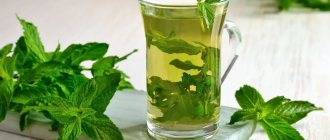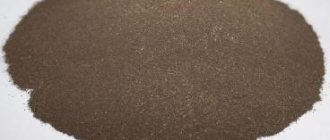What substances can cause poisoning?
Milady Intoxication has a huge number of reasons and reasons to poison, and in her arsenal there are many exogenous and endogenous poisons.
Exogenous toxic substances enter the body from the outside. That is, through the skin and mucous membranes, the upper respiratory tract, and the digestive tract. The most common cause of intoxication is poisoning with ethanol, methanol, heavy metal salts, household chemicals, carbon monoxide, poor-quality food, contaminated water, and medications.
Microbes, penetrating into the body, cause not only disease, but also poisoning with their toxins. The “reason” for exogenous intoxication of the body can, for example, be poisonous representatives of flora and fauna, the pale grebe and puffer fish.
Endogenous poisons are formed in the human body as a result of metabolism, as a consequence of diseases and various pathological conditions: for example, cancer intoxication (with the development of malignant tumors), uremia (with chronic renal failure), thyrotoxicosis (with increased production of thyroid hormones), tuberculosis intoxication and so on.
If the detoxifying function of the liver is insufficient, a large amount of toxic metabolic products accumulates in the body, leading to endogenous intoxication. With complications of diabetes, the body is poisoned by products of carbohydrate metabolism - ketone bodies.
When?
Inflammatory lesions of the bronchi and lungs are the most severe and cause significant intoxication of the body. Among inflammatory diseases of the bronchi, the greatest intoxication is characteristic of bronchiectasis, cystic fibrosis with symptoms of purulent bronchitis, exacerbations of COPD and bronchial asthma. Even more significant intoxication accompanies the course of infectious and inflammatory lesions of the lung tissue - pneumonia, abscess and gangrene of the lung, various forms, especially destructive ones, of pulmonary tuberculosis. Lung lesions are also common in rheumatic diseases and systemic vasculitis, in malignant tumors - lung cancer, atelectasis of pulmonary tissue, and pulmonary failure.
How does intoxication manifest itself?
Signs of intoxication depend on the nature of the toxic substance, its quantity, routes of entry into the body and ability to accumulate.
Toxic substances are divided depending on their effect on:
- carcinogenic (cancer-causing);
- mutagenic (leading to mutations);
- cardiotropic (heart muscle is affected);
- hepatotropic (liver intoxication) and others.
Symptoms of intoxication depend on the severity of poisoning:
- light;
- average;
- heavy.
Intoxication can be acute or chronic.
Acute intoxication occurs when poison enters the body once and is accompanied by pronounced symptoms. For example, food intoxication due to salmonellosis, alcohol intoxication.
Acute intoxication in a child occurs due to influenza, intestinal infection, drug overdose, food poisoning, and acetone syndrome. Competent parents know how to relieve symptoms of intoxication at home - they give the baby a drink and give Enterosgel sorbent (not forgetting to call a doctor).
Chronic intoxication occurs with long-term accumulation of toxic substances in the body, for example, cancer intoxication, lead poisoning, tuberculosis intoxication, drug addiction.
...and did you know that
In Moscow, every twentieth patient delivered by ambulance to city hospitals is diagnosed with acute poisoning.
In the structure of the causes of acute poisoning:
- 80% of cases are due to erroneous intake of a chemical substance;
- 18% of cases - an attempt to commit suicide (suicide);
- 2% of cases are intoxication at work.
Causes and types of food poisoning
In general, there are 2 main causes of food poisoning:
- The body's reaction to foods that differ from the daily diet2.
- pathogenic flora (bacteria, fungi), viruses and toxins that enter the body mainly with contaminated food.
Every corner of the world has its own infectious agents, and they are ready to instantly attack the human gastrointestinal tract, if you just gape.
During the hot season, the chance of getting poisoned increases many times over, because food is stored less and bacteria multiply much faster. Food poisoning is especially common when traveling, so there is a separate concept - “traveler's diarrhea.” Going south, to Asia, the Middle East, Africa, South America or hot islands, we endure a sharp change in climate zone, try unusual national cuisine and drink local water. All this, combined with bacteria and viruses new to our body, can cause food poisoning.
In the US, it has been estimated that out of 1,000 people who become ill after traveling, 1/3 always suffer from diarrhea and food poisoning. E. coli is becoming the most common cause of severe diarrhea abroad1.
A child's body is even more vulnerable. For a fragile body, the cause of poisoning can be anything, especially when traveling: unwashed hands, playing in the sand, unusual sweets or fruits. An accidental sip of water from a pool or sea can also affect a child's intestinal health.
Intoxication of the body when working in hazardous industries
Why did the Mad Hatter from Alice in Wonderland lose his mind? Perhaps it's all in the bag! Or rather, in the processing technology of the felt from which they are made. It turns out that in the 19th century mercury was used to process this material. Chronic intoxication of the body with mercury vapor causes progressive dementia. In England there was even a saying: “mad as a hatter.”
Occupational chronic intoxication these days, unfortunately, is also not uncommon. People who work for a long time in production associated with chemicals gradually accumulate toxic compounds in their bodies. For example, liver intoxication is not so uncommon in chronic lead poisoning.
Symptoms of intoxication in occupational benzene poisoning are associated with toxic effects on hematopoietic organs and blood cells.
Signs of occupational poisoning depend on the toxic substance entering the body.
Common signs of chemical poisoning:
- severe weakness;
- clouding of consciousness;
- dyspnea;
- changes in skin color;
- nausea and vomiting;
- in acute poisoning - loss of consciousness.
Detoxication in such cases is carried out in intensive care units or intensive care units.
Timely intake of Enterosgel sorbent at the first symptoms of intoxication will save you from the dangerous complications of poisoning or reduce its manifestations.
Causes of tumor intoxication
The main reason is the presence of cells that secrete biologically active substances. Some tumors produce harmful substances, but after the primary tumor is removed, all signs of poisoning disappear without a trace. This kind of intoxication occurs even before a tumor is detected; this happens with lung adenocarcinoma, when substances produced by cells cause pain in the joints; with malignant lymphomas, toxins initiate weakness with sweating and high fever.
The intensity of the manifestations depends on the biological characteristics of the cells and their total mass; as the tumor progresses, the symptoms of chronic poisoning intensify as the tumor volume increases. Particularly pronounced signs are observed during tumor disintegration; similar in manifestations, but a much more serious condition can develop with massive death of malignant cells as a result of chemotherapy. When treating neoplasms of lymphatic tissue and blood that are highly sensitive to cytostatics, prevention of tumor lysis syndrome is carried out.
Symptoms of intoxication are characteristic of multiple metastases in the bones, when toxic cellular products are accompanied by the negative effect of calcium released from decaying bone tissue - hypercalcemia.
Signs of acute and chronic intoxication of the body
In case of acute intoxication of the body, the patient experiences:
- heat;
- headache;
- muscle and joint pain;
- nausea;
- vomit;
- diarrhea.
When exposed to strong poisons, there is a serious threat to life. In such cases, urgent hospitalization is necessary, since it is not possible to relieve intoxication at home!
Chronic intoxication may be accompanied by:
- weight loss;
- aversion to food;
- insomnia;
- depression;
- indigestion;
- anemia;
- decreased immunity;
- dermatitis;
- prone to allergic reactions and autoimmune diseases.
With a decrease in the body's defenses and a severe purulent infection, intoxication syndrome develops.
This condition may occur against the background of:
- peritonitis;
- pleural empyema;
- osteomyelitis;
- phlegmon;
- abscess;
- sepsis.
Severe intoxication of the body leads to toxic damage to the heart muscle, nervous system, liver and kidneys.
Palpitations, depression of consciousness or euphoria, kidney and liver failure are the main signs of intoxication syndrome.
The diagnosis is made through blood tests and the leukocyte index of intoxication. This important research method makes it possible to assess the severity of endogenous intoxication and the effectiveness of the treatment.
Normally, the values of the leukocyte index of intoxication range from 0.3 to 1.5. An increase in values from 4 to 9 indicates endogenous poisoning.
INTOXICATION SYNDROMES in critical care medicine and the possibility of their infusion correction.
Kharkov Medical Academy of Postgraduate Education
Summary. The article discusses modern aspects of the pathogenesis of intoxication syndromes. Pathogenetic approaches to infusion therapy of endogenous intoxication are substantiated. A critical analysis of the possibilities of extracorporeal detoxification therapy and individual infusion drugs as means for detoxification was carried out. Practical recommendations for the use of some infusion solutions with detoxification effects are presented.
Key words: detoxification, plasmapheresis, infusion therapy.
Intoxication is one of the most widely used terms in clinical practice; intoxication is encountered in a wide variety of branches of medical practice, among which, in addition to toxicology, it is necessary to mention surgery, especially purulent-septic surgery, various areas of internal medicine and pediatrics, infectious diseases and, of course, intensive care. Despite the obviousness of this pathological process, its strict scientific outlines have not been fully formulated to this day. This is due to completely objective reasons, among which it is necessary to mention: the extreme diversity of toxic factors, and, as a consequence, a large polymorphism of intoxication symptoms; complex interaction between the processes of toxin production and detoxification in the conditions of the whole organism; the dominance of nonspecific manifestations of intoxication due to the known universality of the metabolic consequences of various intoxication processes.
In this regard, it seems appropriate to highlight some of the most general provisions regarding the classification of toxins and mechanisms of intoxication. The morphological basis of intoxication is the subcellular interactions between the toxin (ligand) and the receptor, as well as subsequent changes in various intra- and extracellular regulatory molecules. The consequence of this interaction is a change in certain biochemical processes and a violation of the functional state of tissues and organs. The condition for the development of intoxication, which is understood as a dynamic process, is the dominance of the processes of toxins entering from the outside or their formation within the body over the capabilities of detoxification systems to eliminate them. Depending on the sources of toxins, intoxication is divided into:
1) exogenous;
2) endogenous;
3) endotoxicosis [1].
Toxicologists and, to a lesser extent, infectious disease specialists have to deal with exogenous intoxications when treating patients with diseases whose pathogens produce exotoxins (diphtheria, tetanus, botulism). Exogenous intoxications, as a rule, have a clearly defined clinical picture, and the best means of detoxification is the introduction of specific antidotes or toxoids.
In most other clinical situations, intoxication syndrome is caused by the accumulation of:
- bacterial endotoxins (lipopolysaccharide) and other bacterial modulins (teichoic acids, peptidoglycan, mannose, etc.), which are the primary biochemical substrate of endotoxicosis;
- toxic organic compounds (mercaptan, ammonia, indole, skatole, false neurotransmitters);
- excess amounts of physiological products of interstitial metabolism and metabolism (ketone bodies, urea, creatinine, uric acid, bilirubin, lactic acid, etc.);
- biologically active substances and mediators (interleukins, interferons, tumor necrosis factor and other mediators of the systemic inflammatory response, eicosanoids, kinins, serotonin, biogenic amines, etc.).
In addition to these toxic factors, developing water-electrolyte, osmotic and acid-base disorders undoubtedly influence the formation of intoxication syndrome and its clinical manifestations. I would like to note that the manifestations of these disorders are often very similar to the symptoms of endotoxemia, and can, to some extent, determine the severity of this symptom complex.
From a practical point of view, it is very important to know the size of toxin molecules, as well as the strength of their binding to carrier proteins. In accordance with this, a distinction is made between toxins with molecules less than 150 nm in size, which are predominantly of dismetabolic origin, from 150 to 250 nm, which are of para-infectious origin (lipopolysaccharide) and xenobiotics, and toxin molecules with a size greater than 250 nm, formed as a result of resorption products of cellular destruction. According to available data, toxins of parainfectious origin quite often do not have a strong connection with carrier proteins (albumin and globulin fractions of plasma), and large-molecular toxins formed during cellular destruction have a highly strong connection with toxin-carrying plasma fractions [2].
Equally important for practice is an understanding of detoxification pathways. The most well-known detoxification routes are:
- metabolic mechanisms (utilization of ketone bodies);
- excretory mechanisms (excretion with urine, exhaled air and contents of the gastrointestinal tract);
- immune mechanisms (absorption of toxins by cells of the monocyte-macrophage system, binding by neutralizing antibodies, etc.)
Given the potentially fatal results of progressive intoxication, detoxification has been and remains one of the mainstays of intensive care. In the minds of most clinicians, a strong belief has taken root in the detoxification capabilities of infusion therapy, which, unlike extracorporeal detoxification methods, is easily feasible and therefore widely used in all medical institutions. Meanwhile, infusion detoxification can be effective only if its capabilities are used correctly, which requires knowledge of the pharmacodynamics of infusion drugs. There are several “myths” associated with infusion therapy, and it is necessary to understand what is fiction and what is reality.
Myth one.
Infusion therapy always has a detoxifying effect.
It is obvious that the detoxification effect of infusion therapy is possible only in cases where there are prerequisites for enhancing the natural pathways of detoxification with the help of the administered infusion drug. This is possible only in cases where the toxin does not have a strong connection with carrier proteins or receptor molecules and can overcome the renal barrier, i.e. excreted from the body with increased diuresis. It is in such cases that infusion detoxification, called forced diuresis, has become most widespread in toxicological practice. In other cases, when carrying out infusion therapy, one has to rely only on the dilution effect and, as a result, a decrease in the concentration of toxic compounds. However, keeping in mind the fact that the volume of the interstitial sector in adults is 15-16% of body weight (about 10 liters), and plasma - 4-5% of body weight (about 3 liters), in order to reduce the concentration of dissolved toxins doubled, it is necessary to introduce and retain about 13 liters of fluid in the patient’s body, which will inevitably lead to the development of edema. Obviously, the benefits of such “detoxification” are more than doubtful. Despite these obvious arguments that reflect the scope of infusion detoxification, another myth has emerged regarding the capabilities of infusion therapy.
Myth two.
There are special “detoxification solutions”.
Hemodez, Neohemodez, Gluconeodez are low-molecular solutions that, in accordance with existing instructions, are capable of binding and removing various toxic compounds in the urine. Unfortunately, all efforts aimed at establishing scientific primary sources that could confirm the information did not lead to the desired goal. Such data is simply not available. At the same time, the negative properties of these so-called detoxification solutions are well known: with repeated administration, Hemodez is known to inhibit the function of the reticuloendothelial system (RES) of the liver, since polyvinylpyrrolidone particles accumulate in its cells, blocking their phagocytic activity. Repeated infusions of Hemodez inevitably lead to the development of iatrogenic thesaurismosis (Dupont-Lachapelle disease). This phenomenon is especially pronounced in newborns and young children.
It is not surprising that in 1958 the use of polyvinylpyrrolidone derivatives was banned in the United States, and starting from the second half of the 1970s, the mention of polyvinylpyrrolidone derivatives finally disappeared from the pages of foreign medical literature.
Myth three.
Solutions of polyvinylpyrrolidone are indispensable for detoxification infusion therapy.
Let's try to refute this myth. Considering the mechanisms of endotoxin formation and detoxification pathways outlined at the beginning of the article, it seems logical to assume that an infusion solution capable of having a detoxification effect should:
■ optimize tissue perfusion in order to improve conditions for the diffusion of toxic factors from affected cells, tissues and organs into the general bloodstream;
■ cause hemodilution, accompanied by a decrease in the concentration of toxins in the blood plasma;
■ force diuresis, as a result of which toxins and metabolites that can cross the blood-renal barrier are eliminated from the body;
■ maintain the functional state of hepatocytes, which are the most important part of metabolic detoxification;
■ eliminate the consequences of intoxication syndrome (metabolic acidosis, diselectrolyte disorders and metabolic disorders).
The detoxification effect of infusion therapy is possible only in cases where there are prerequisites for enhancing natural detoxification pathways with the help of the administered infusion drug.
A new opportunity for intensive therapy for intoxication syndrome was opened by the appearance of the innovative drug Reosorbilact® . A special feature of this drug is its balanced composition of potassium, calcium and magnesium, which contains excess sodium in the form of two salts - chloride and lactate. Obviously, the sodium alone in this preparation provides an osmolality of about 600 mOsmol/kg, which makes Rheosorbilact® very similar to the hypertonic Ringer-lactate solution that was used to combat burn shock in the 1970-1980s.
The main difference is that Reosorbilact® has a significantly greater alkalizing ability, provided by sodium lactate, which is almost 6 times more than in the ringer-lactate solution. Sodium lactate, metabolized in the liver and kidneys, forms bicarbonate ion, increases the level of actual bicarbonate in the blood plasma, and corrects metabolic acidosis. The second feature of Reosorbilact® is the inclusion of magnesium ions in its composition, which allows us to count on some positive effects of this electrolyte on neuromuscular excitability and smooth muscle tone. In addition, Reosorbilact® contains sorbitol in isotonic concentration (60 g/l).
Together with sodium, sorbitol provides a theoretical osmolarity of Reosorbilact® of about 900 mOsmol/kg, which is 3 times higher than plasma osmolarity.
The comparative composition of infusion solutions with detoxification effects is presented in the table.
Due to its high osmolarity, Reosorbilact® causes fluid to flow from the intercellular space into the vascular bed, which improves microcirculation and tissue perfusion, which solves the first problem of detoxification therapy. The movement of fluid from the intercellular sector into the intravascular space leads to an increase in the volume of circulating blood due to an increase in plasma volume, which is accompanied by hemodilution. Thus, the interstitial space is “drained” and freed from toxic factors. Due to the powerful osmodiuretic effect of sorbitol and sodium in hypertonic concentrations, a pronounced diuretic effect of the drug is noted. It is significant that Reosorbilact® also has a nephroprotective effect, and also increases diuresis even in the presence of acute renal failure. Consequently, toxins that can cross the renal barrier are intensively eliminated from the body. In addition, sorbitol, metabolized to fructose, normalizes carbohydrate and energy metabolism. This has a beneficial effect on the functional state of hepatocytes, in which glycogen reserves are restored, which is an obvious contribution to the intensification of natural detoxification processes.
Sodium lactate contained in Reosorbilact® helps to correct the acid-base state, and also, by participating in the reactions of carbohydrate-energy metabolism, restores and stimulates the functions of the liver and kidney RES cells. The presented theoretical ideas about the possible detoxification activity of Reosorbilact® have found convincing clinical and experimental confirmation. Studies conducted by domestic clinicians indicate that in patients with endogenous intoxication due to chronic inflammatory diseases of the respiratory tract, the use of Reosorbilact® provided an earlier and more significant detoxification effect than Hemodez infusion.
This was expressed in a significantly greater decrease in leukocytosis, indicators of average blood mass molecules and malondialdehyde. To summarize, I would like to emphasize that clinical practice requires a rethinking of existing ideas about detoxification infusion therapy. It is obvious that the rejection of the stereotypical idea of a detoxification solution only as a drug that binds and removes certain toxic substances with urine will help expand knowledge about the pathogenetic mechanisms and methods of detoxification, as well as the introduction into clinical practice of other, more substantiated and multifunctional means of infusion detoxification.
“Household” intoxication or “reality poisoning”?
It is not for nothing that household poisoning is called the “epidemic of the century”, because quite often the means that are supposed to make our life easier become the cause of acute intoxication. Bleach, pesticides, detergents and cleaners, car windshield wipers - the list of potentially dangerous culprits of severe poisoning is quite extensive.
The number of poisonings due to the erroneous use of household chemicals, especially by children, has increased significantly in recent years. Cases where children's curiosity ends tragically are not so rare in everyday life: either a two-year-old girl swallows a “Mole” for cleaning pipes, or an older boy decides to try a powerful detergent advertised on TV.
After intoxication with household chemicals, acute renal and liver failure occurs. Stopping the work of these vital organs that remove toxins from the body can, in some cases, even lead to the death of a person.
Poisoning with ethanol and its surrogates
According to the World Health Organization, more than 300 thousand people die annually from intoxication with alcohol and its substitutes.
According to the international classification (ICD10), the toxic effects of alcohol are coded as T51.
One of the largest cases of poisoning with surrogate alcohol occurred in the Estonian city of Pärnu in 2001: workers at one of the plants stole 20 canisters of methyl alcohol. As a result, 68 people died from poisoning, and 43 became disabled after intoxication.
Methyl alcohol is a potent poison of the vascular and nervous system. It is quickly absorbed and very slowly eliminated from the body.
Typical results of methanol poisoning are blindness, cerebral edema, and cardiac and respiratory arrest.
Treatment of food poisoning
First of all, to restore the body, you need dietary nutrition, which will help restore normal functioning of the gastrointestinal tract (GIT).
When resuming nutrition after poisoning, general recommendations must be followed3:
- You need to eat often and in small portions.
- Fried, stewed, spicy, salty and fatty foods are strictly prohibited.
- Alcohol and carbonated sweet drinks should be forgotten during treatment and further recovery.
- It is important to maintain the serving temperature of the food - it should remain neutral - neither cold nor hot.
- The predominant cooking method is boiling and steaming.
- Dishes should be light, mostly lean and familiar to the body.
A home or traveler's first aid kit should always include anti-poisoning medications.
The most popular products3,4:
- Adsorbent preparations or sorbents. No first aid kit should be without such a product. The task of the sorbent is to absorb the toxin and its further removal from the body.
- Drugs to improve digestion. They help the body fully absorb food and will be especially relevant after defeating poisoning.
- Antispasmodics or painkillers. Spasms and pain in the stomach or intestines can also be the body’s reaction to an external “attack”. The task of such medications is to relax the internal muscles and relieve spasms, as a result of which the pain goes away.
When faced with food poisoning, it is first of all important to cope with the acute period of the problem, but it is equally important to think about the period of rehabilitation of the digestive system, because the inflammatory process disrupts its normal functioning. One of the consequences of such a disorder may be a lack of digestive enzymes, which are responsible for the breakdown and absorption of food in the body. As a result, the body experiences a deficiency of nutrients, and a person, even after recovery, may still experience unpleasant symptoms for some time - discomfort in the abdomen, heaviness after eating, periodic bowel movements, etc.
Pancreatin enzyme preparations may be useful to maintain digestion after poisoning5. They are called enzymatic because they contain digestive enzymes identical to those produced by the body and are included in the standard treatment of foodborne infections6.
Digestive enzymes are a special type of compound designed to break down carbohydrates, proteins and fats for subsequent absorption in the body.
How to treat intoxication?
Therapy for exogenous and endogenous intoxication of moderate and severe severity is carried out in intensive care units, intensive care units, and toxicology centers.
Treatment of acute and chronic intoxication is carried out taking into account the cause of poisoning, the severity of the patient’s condition, the results of laboratory and instrumental studies.
Removing intoxication in each specific case has its own differences.
Treatment of cancer intoxication is palliative, that is, drugs are prescribed that improve the quality of life of an incurable patient. For cancer intoxication, narcotic analgesics (morphine), sorbents (Enterosgel), and nonsteroidal anti-inflammatory drugs are prescribed. In a hospital setting, a drip is performed for intoxication with the administration of drugs that remove toxins from the body.
Therapy of tuberculosis intoxication involves a long course of treatment with anti-tuberculosis drugs, vitamins and immunostimulants.
For household and professional poisoning, antidotes (antidotes), detoxification of the body, gastric and intestinal lavage are used to cleanse toxic substances.
Enterosgel intestinal sorbent will help quickly and effectively relieve intoxication at home in case of poisoning.
Symptoms of tumor intoxication
Intoxication is poisoning, but not acute, but chronic, that is, its symptoms increase gradually. The only exception is tumor lysis syndrome during chemotherapy, when clinical manifestations increase rapidly until acute renal failure.
Weakness and fatigue are typical for intoxication, leading the patient to constantly stay in bed. An increase in temperature is possible - from low-grade fever with a generalized process to 40°C with the disintegration of a large tumor conglomerate with the formation of a necrotic cavity several centimeters in diameter.
All patients' skin color changes - from pale to sallow, everything is individual, but noticeable to others. There is a slight swelling of the surface tissues - pastiness, sweating increases, especially at night.
Products of cancer metabolism circulate in the blood, settling in organs and disrupting their functioning. Damage to the cardiovascular system is manifested by changes in heart rhythm and increased breathing, and to the nervous system - depression with daytime sleepiness and night sleep disturbances. The kidney tubules become clogged with metabolic products, reducing excretory function.
Partially toxic products are excreted by the mucous membrane of the gastrointestinal tract, which leads to its dryness and, as a result, loss of appetite. The liver actively fights toxins, but it also stops coping, changing the content of microelements in the plasma and blood viscosity. In severe tumor intoxication, constant nausea is replaced by vomiting that does not bring relief.
Enterosgel and poisoning
The drug can be used for intoxication, both acute and chronic, as well as at all stages of treatment (in first aid, first aid, hospital, specialized, at the rehabilitation stage).
Unlike other drugs for similar purposes, the drug is approved for use in children from the first days of life, and is also indicated for pregnant and lactating women.
Enterosgel even removes bacterial endotoxins, promotes the regeneration of damaged mucosa and normalizes the intestinal microflora.
Thus, the functioning of the intestines and immune system is restored. At the first signs of possible poisoning, you can take Enterosgel in a standard dose. Then use the drug according to the instructions for 1-2 weeks.
A sufficient amount of water consumed and laxatives contribute to the rapid removal of toxic products from the body.
Liver protection medications, digestive enzymes, and anti-dysbacteriosis medications will also help relieve intoxication at home.
How to relieve alcohol intoxication?
Unfortunately, the morning after a festive “alcoholic evening” is not always good. My head is pounding, my mouth feels like the Sahara Desert, my heart is pounding somewhere in my throat, it’s cloudy and stormy, a cat is loudly stomping around the apartment - a nightmare, in a word!
Mild alcohol intoxication, or, more simply, a hangover, is usually treated at home.
What needs to be done: get enough sleep, take Enterosgel sorbent on an empty stomach, be sure to have breakfast and drink clean water throughout the day.
A drip for alcohol intoxication at home can be prescribed if you need to immediately “get back on track.”










